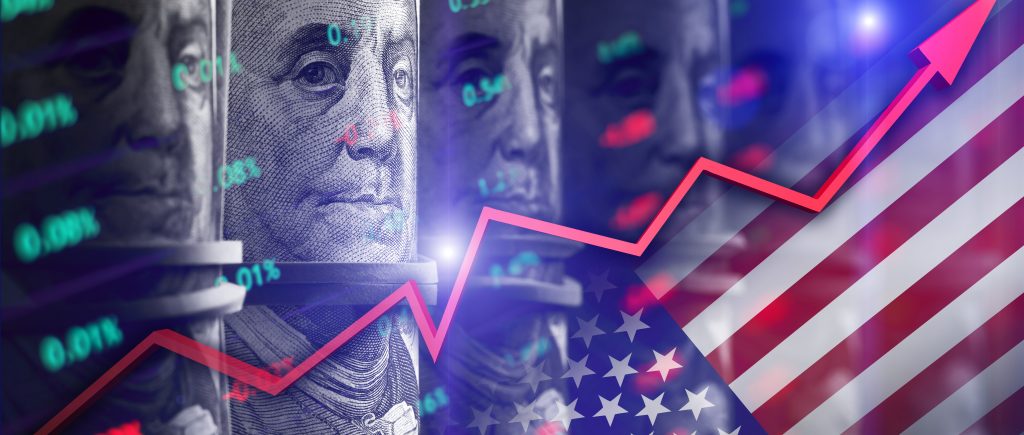U.S. stock index futures traded largely steady on Thursday as investors awaited a fresh wave of corporate earnings amidst ongoing uncertainty over trade policies and Federal Reserve actions.
At 05:45 ET (09:45 GMT), Dow Jones Futures dropped by 30 points, or 0.1%, S&P 500 Futures gained 6 points, or 0.1%, and Nasdaq 100 Futures slid 40 points, or 0.2%. The major averages rose after a volatile session on Wednesday, fueled by reassurances from President Donald Trump that he did not plan to fire Federal Reserve Chair Jerome Powell, despite growing criticism directed at Powell from the president and his allies.
Netflix Q2 Earnings Report Looms
The earnings season has started strong, with major banks largely surpassing expectations, though executives have offered a cautious outlook for the months ahead. Thursday’s reports include Netflix’s (NASDAQ: NFLX) Q2 earnings after the market closes. Analysts at Vital Knowledge expect the streaming giant to post solid results, with its dominance of the sector continuing to expand. However, concerns persist that expectations for Netflix’s near-term performance may be overly optimistic.
Other major companies set to report their latest earnings before the bell include GE Aerospace (NYSE: GE), PepsiCo (NASDAQ: PEP), Elevance Health (NYSE: ELV), and Cintas Corporation (NASDAQ: CTAS).
Taiwan Semiconductor Manufacturing Reports Record Profit
Earlier in the session, Taiwan Semiconductor Manufacturing (NYSE: TSM) reported a record profit for Q2, surpassing market expectations. The world’s largest contract chipmaker benefited from growing demand in artificial intelligence, bolstering optimism for the technology sector.
Trump Denies Plans to Fire Powell
U.S. stock markets faced significant volatility on Wednesday following reports that President Trump was considering firing Fed Chair Jerome Powell. This fueled concerns over the independence of the Fed. However, Trump later clarified that he had no plans to fire Powell, though he did state that he would “love” to see Powell resign. Powell, who was appointed by Trump in 2017, has expressed his intention to serve out his term, which ends in May 2026.
Trump has frequently criticized Powell, particularly for his reluctance to cut interest rates more quickly in response to the economic uncertainty caused by Trump’s tariffs. Powell has advocated for a more cautious, wait-and-see approach to future monetary policy changes.
Retail Sales and Jobless Claims Data Awaited
In addition to corporate earnings, investors are also awaiting the latest retail sales and jobless claims data for insights into the health of the U.S. economy. This data will be key in gauging the likelihood of future Federal Reserve rate cuts. The Federal Reserve’s Beige Book, released on Wednesday, indicated that U.S. economic activity rose in June and early July, but the outlook remains clouded by the potential effects of Trump’s aggressive tariff agenda.
At the Fed’s June meeting, officials forecasted two rate cuts later this year, with markets anticipating that the first reduction could occur at the September FOMC meeting. However, New York Federal Reserve President John Williams cautioned that it was too early to consider rate cuts, citing inflationary pressures stemming from tariffs and continued uncertainty in the economic outlook.
India Trade Deal Close, Oil Prices Steady
On the trade front, President Trump expressed optimism on Wednesday, stating that the U.S. was close to finalizing a trade deal with India, following a recent agreement with Indonesia. Talks with the European Union, which faces a proposed 30% tariff, are ongoing, though the EU has warned of potential retaliation.
Oil prices steadied on Thursday after three days of losses, supported in part by stronger-than-expected economic data from major oil-consuming countries. At 05:45 ET, Brent crude futures slipped 0.1% to $68.43 per barrel, while U.S. West Texas Intermediate (WTI) crude futures edged 0.1% higher to $66.42 per barrel.
China, the world’s largest oil importer, reported better-than-expected growth data, bolstering market sentiment. Additionally, the U.S. saw a larger-than-expected drop in crude oil inventories, with a decline of 3.9 million barrels to 422.2 million barrels last week, according to the Energy Information Administration. This decline suggests stronger refinery activity, tighter supply, and increased demand.
Trump’s proposed 15-20% blanket tariffs on most trading partners, up from the current 10%, raise fears of rising consumer prices. Despite Trump’s dismissal of inflation risks, citing Thursday’s market highs, higher tariffs could increase costs for imported goods, challenging the Federal Reserve’s price stability efforts. The steady US inflation rate of 2.35% in May and core inflation at 2.79% suggest a delicate balance that could be disrupted by supply chain shocks.
Sector-Specific Performance
While US stocks faced broad pressure, some sectors showed resilience. Levi Strauss shares rose 10% after exceeding Q2 expectations and raising its full-year outlook, planning to absorb tariff costs. Energy stocks, like BP, gained 2% in premarket trading despite warnings of Q2 impairments due to lower fuel prices. Technology and crypto-related stocks, buoyed by Bitcoin’s surge to $118,000, also held firm, with Coinbase and MicroStrategy up 1.3% and 3%, respectively.
US-Canada Trade Tensions
The 35% tariff on Canada, with threats of further increases if Canada retaliates, strains the U.S.-Mexico-Canada Agreement (USMCA). Exemptions for USMCA-compliant goods offer temporary relief, but their permanence is uncertain. Canadian Prime Minister Mark Carney emphasized cooperation on fentanyl and trade, aiming for a deal by August 1.
Global Trade Dynamics
Trump’s tariff strategy extends to potential duties on the European Union, India, and Vietnam, which was surprised by a 20% tariff announcement. The EU is nearing a trade deal outline, awaiting US response. These moves signal a protectionist shift, potentially disrupting global supply chains and trade balances.
As US stocks navigate Q2 earnings and upcoming inflation data, tariff-induced volatility is likely to persist. Policymakers should closely monitor inflation indicators, as tariff-driven price hikes could complicate monetary policy. Businesses may adopt cost-absorption or supply chain diversification strategies, as seen with Levi Strauss. Investors are now focusing on resilient sectors like technology, defense (e.g., AeroVironment up 9.5%), and precious metals to weather trade uncertainties.
 Noor Trends News, Technical Analysis, Educational Tools and Recommendations
Noor Trends News, Technical Analysis, Educational Tools and Recommendations





